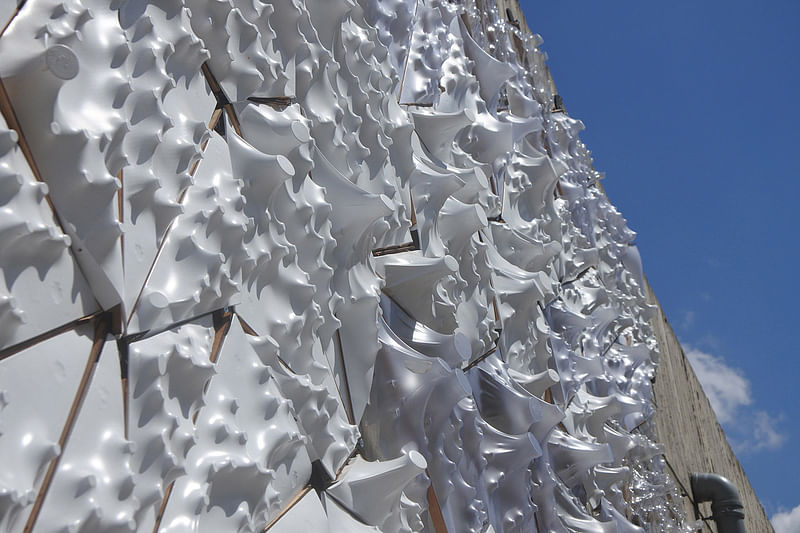
Flashback: Students investigate “Cellular Re-Visions” for AA Istanbul Visiting School 2015
By Justine Testado|
Friday, Feb 12, 2016
Related
A Group of 40 students from Turkey and abroad traveled to Istanbul Bilgi University last June to take part in the 2015 AA Istanbul Visiting School workshop, "Cellular Re-Visions". Organized by the Architectural Association in collaboration with Bilgi University, the 10-day workshop focuses on material investigation through teaching generating design methodologies and large-scale prototyping techniques.
As the VS program normally goes, students respond to the assigned prompt by first working in groups to conduct design research and experiments. Toward the end, the student groups then apply their findings in realizing a large-scale installation in just a matter of days.

Students also have the opportunity to attend software sessions, design seminars, studio tutorials, and lectures from internationally known professionals. Last year's lecturers included Xavier de Kestelier (partner at Foster+Partners and the director of SmartGeometry) and Tobias Nolte (director of Gehry Technologies and co-founder of Certain Measures).
Keep reading for more about the 2015 Istanbul Visiting School.

"[Taking place at Istanbul Bilgi University's SantralIstanbul Campus, students focused on the] creation of a complex partitioning system that acts as a parasitic addition to the façade. This task has been investigated by focusing on a combination of structural, morphological, and contextual factors which the design intervention was expected to respond to in order to differentiate its material and geometrical organization."


"The main objective of large-scale fabrication is to investigate the prototype as an analog machine, whereby participants can examine the transformation of systems they have devised in digital simulations into material configurations embedded with specific types of data.
In this respect, it is crucial to consider real world constraints such as gravity, physical forces, and loads in the digital simulations in order to create analogous correlations between the computational and physical paradigms."

"Physical material investigations have been based on the use of vacuum-forming techniques with an innovative approach, whereby the principles of vacuum forming have been transformed into design inputs. This approach has enabled the simultaneous inter-relation of digital and physical experiments. For the fabrication of the facade installation, design explorations focused on form-finding techniques with PVC, a material which is durable for external weather conditions, through the implementation of vacuum-forming processes. The changes in the material behaviour of PVC due to various vacuum and temperature settings were analysed and catalogued. This information served as design parameters for digital design variations."
The final installation, with dimensions of 9 meters in length and 3 meters in height, integrates basic design parameters such as texture, light, shadows, colours, and light transmittance. While the installation acts a secondary skin during the day, at night it becomes imbued with varying patterns of light, exposing the varying levels of transparency and shadow among its individual elements."

More project photos in the gallery below.




Share
0 Comments
Comment as :